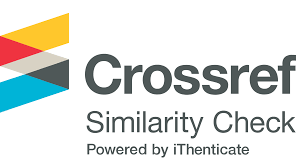Publication Ethics and Malpractice Statement
ICT Research strongly supports the mission of the COPE Code of Conduct and Best Practice Guidelines for Journal Editors; all individuals collaborating with our journal are invited to comply with this mission.
Ethics
In order to provide our readers with a journal of highest quality we state the following principles of Publication Ethics and Malpractice Statement. All articles not in accordance with these standards will be removed from the publication if malpractice is discovered at any time even after the publication.
All research articles published by ICT Research are subject to a rigorous ethical standards. Our journal endorses the Code of Conduct of the Committee on Publication Ethics (COPE), as well as the COPE International Standards for Editors and Authors Guidelines.
Plagiarism
The Editorial Board of our journal will immediately screen all articles submitted for publication in that journal. All submissions we receive are checked for plagiarism by using online available tools. Any type of plagiarism is unacceptable and is considered unethical publishing behavior. Such manuscripts will be rejected.
The European Science Foundation released a Code of Conduct on Research Integrity, which is fully supported by our journal. All authors submitting papers to our journal are required to adopt these policies.
Conflict of Interests
Conflict of interest exists when an author (or the author's institution), reviewer, or editor has financial or personal relationships that inappropriately influence (bias) his or her actions (such relationships are also known as dual commitments, competing interests, or competing loyalties). These relationships vary from negligible to great potential for influencing judgment. Not all relationships represent true conflict of interest. On the other hand, the potential for conflict of interest can exist regardless of whether an individual believes that the relationship affects his or her scientific judgment. Financial relationships (such as employment, consultancies, stock ownership, honoraria, and paid expert testimony) are the most easily identifiable conflicts of interest and the most likely to undermine the credibility of the journal, the authors, and of science itself. However, conflicts can occur for other reasons, such as personal relationships, academic competition, and intellectual passion.
All participants in the peer-review and publication process must disclose all relationships that could be viewed as potential conflicts of interest. Disclosure of such relationships is also important in connection with editorials and review articles, because it can be more difficult to detect bias in these types of publications than in reports of original research. Editors may use information disclosed in conflict-of-interest and financial-interest statements as a basis for editorial decisions.
When authors submit a manuscript, whether an article or a letter, they are responsible for disclosing all financial and personal relationships that might bias their work. To prevent ambiguity, authors must state explicitly whether potential conflicts do or do not exist. Authors should do so in the manuscript on a conflict-of-interest notification page, providing additional detail, if necessary, in a cover letter that accompanies the manuscript. Increasingly, individual studies receive funding from commercial firms, private foundations, and government. The conditions of this funding have the potential to bias and otherwise discredit the research.
Scientists have an ethical obligation to submit creditable research results for publication. Moreover, as the persons directly responsible for their work, researchers should not enter into agreements that interfere with their access to the data and their ability to analyze them independently, and to prepare and publish manuscripts. Authors should describe the role of the study sponsor, if any, in study design; collection, analysis, and interpretation of data; writing the report; and the decision to submit the report for publication. If the supporting source had no such involvement, the authors should so state. Biases potentially introduced when sponsors are directly involved in research are analogous to methodological biases.
Editors may request that authors of a study funded by an agency with a proprietary or financial interest in the outcome sign a statement, such as "I had full access to all of the data in this study and I take complete responsibility for the integrity of the data and the accuracy of the data analysis." Editors should be encouraged to review copies of the protocol and/or contracts associated with project-specific studies before accepting such studies for publication. Editors may choose not to consider an article if a sponsor has asserted control over the authors' right to publish.
Reviewers must disclose to editors any conflicts of interest that could bias their opinions of the manuscript, and they should reсuse themselves from reviewing specific manuscripts if the potential for bias exists. As in the case of authors, silence on the part of reviewers concerning potential conflicts may mean either that conflicts exist and the reviewer has failed to disclose them or conflicts do not exist. Reviewers must therefore also be asked to state explicitly whether conflicts do or do not exist. Reviewers must not use knowledge of the work, before its publication, to further their own interests.
Editors who make final decisions about manuscripts must have no personal, professional, or financial involvement in any of the issues they might judge. Other members of the editorial staff, if they participate in editorial decisions, must provide editors with a current description of their financial interests (as they might relate to editorial judgments) and reсuse themselves from any decisions in which a conflict of interest exists.
Hazards and Human or Animal Subjects
If a research study involves chemicals, procedures or equipment that have any unusual hazards inherent in their use, the author(s) must clearly identify these in the submitted manuscript. Authors should also inform participating human subjects about the purpose of the study.
Sponsors
Ministry of Information and Communications (MIC), Viet Nam


